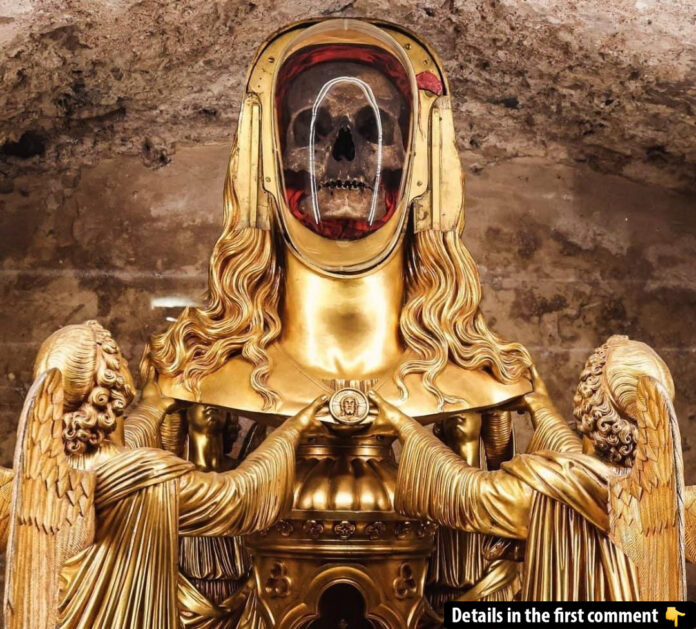Could a gilded reliquary in a French basilica truly house the skull of Mary Magdalene, one of the most enigmatic figures of the Bible? Viral photographs of a gold-encased skull, revered by the Catholic Church, have reignited the debate over its authenticity. While the Church recognizes it as the remains of Jesus’ follower, skeptics and scientists alike question the evidence. This relic’s history, controversy, and scientific scrutiny continue to captivate audiences worldwide.
The Discovery of the Relic
The story of this relic began in 1279, when Charles of Salerno, a nephew of French King Louis IX, allegedly uncovered the bones of Mary Magdalene in a marble tomb in Saint-Maximin-la-Sainte-Baume, southern France. According to tradition, a wooden tablet accompanied the skeleton, identifying it as Mary Magdalene. This discovery coincided with medieval legends claiming that Mary Magdalene had fled the Holy Land and settled in Provence after Jesus’ death.
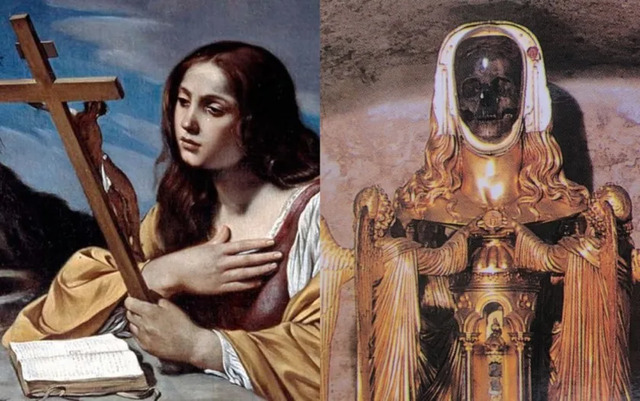
In 1295, Pope Boniface VIII officially recognized the relics, granting them legitimacy within the Catholic Church. A basilica was constructed to house the remains, further cementing Saint-Maximin-la-Sainte-Baume’s role as a pilgrimage site. Despite its revered status, competing claims about the final resting place of Mary Magdalene—including Ephesus in modern-day Turkey—have persisted for centuries.
Video
Uncover the secrets of Mary Magdalene – watch the video to explore the mysteries surrounding her life and legacy!
The Relic’s Controversy
From the moment of its discovery, the identification of the skull as Mary Magdalene’s has been met with skepticism. By the 17th century, historians like Jean de Launoy publicly doubted the authenticity of the relic, sparking fierce backlash from the Church. His writings were banned, and bookstores selling his work faced fines.
More recently, scientific studies have sought to provide clarity. In the 1970s, anthropologists determined that the bones likely belonged to a first-century Mediterranean woman. Genetic analyses conducted in 2016 further identified Jewish ethnic markers. While these findings align with what might be expected of Mary Magdalene’s remains, they stop short of definitive proof. As one anthropologist noted, “We are absolutely not sure that this is the true skull of Mary Magdalene.”
The Role of the Catholic Church
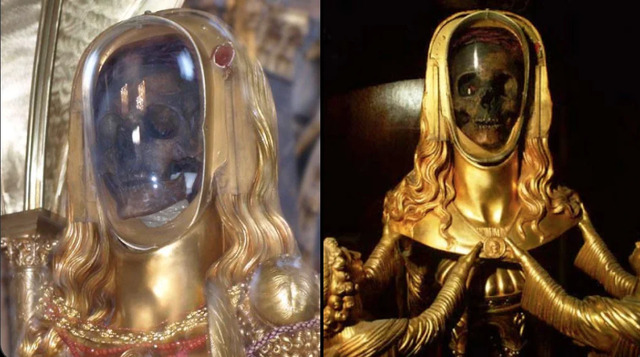
For the Catholic Church, relics hold deep spiritual significance, serving as tangible connections to saints and their legacies. The recognition of the skull as Mary Magdalene’s since the Middle Ages has made Saint-Maximin a key pilgrimage destination. The Church’s endorsement lends credibility to the relic’s status, but it has not deterred questions about its authenticity.
The Church’s restrictions on invasive testing, such as carbon dating, reflect its emphasis on faith over empirical evidence. While the relic’s spiritual value remains undiminished for believers, this stance limits the potential for scientific breakthroughs.
Scientific Investigations
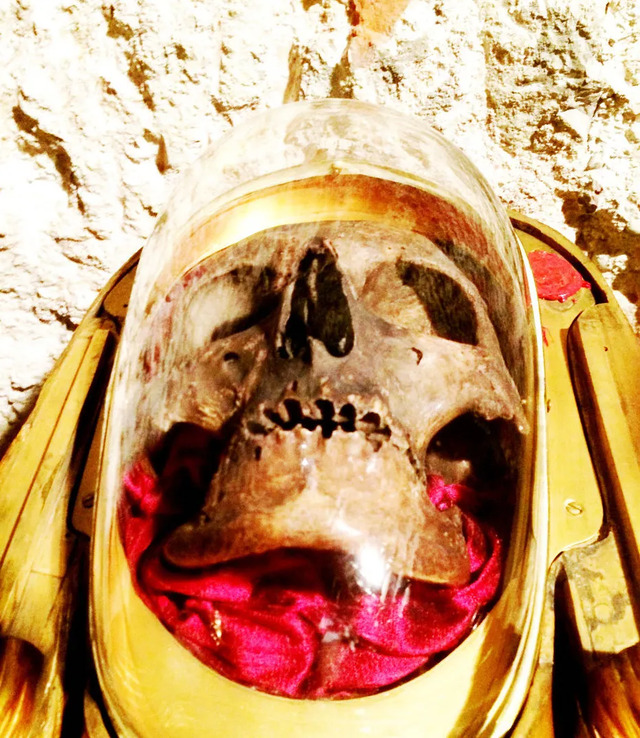
Modern science has attempted to unravel the mystery of the relic, albeit with mixed results. The 1974 anthropological study concluded that the skull belonged to a woman who lived in the first century, consistent with Mary Magdalene’s timeline. Genetic testing of hair found with the remains further indicated Jewish ancestry, aligning with historical accounts of Mary Magdalene’s background.
In 2016, scientists performed mitochondrial DNA analysis on samples taken from the remains. While the findings added depth to the profile of the individual, they could not definitively link the relic to Mary Magdalene. The lack of conclusive results underscores the challenges of using modern techniques to verify ancient relics.
Recreating a Face from the Past
In 2017, biological anthropologist Philippe Charlier and forensic artist Philippe Froesch used the skull to create a facial reconstruction. Their work depicted a Mediterranean woman in her fifties, with a pointed nose, high cheekbones, and dark brown hair. The process involved creating a 3D model based on over 500 photographs of the skull, which was locked inside a glass case.
While the reconstruction offered a glimpse into the possible appearance of the woman, it stopped short of definitively identifying her as Mary Magdalene. Froesch and Charlier emphasized that their project aimed to humanize the relic and take it “out of anonymity.”
Could this be the face of Mary Magdalene? Watch the video to explore the fascinating investigation into this ancient mystery!
Symbolism of the Reliquary
The gold reliquary housing the skull is a masterpiece of medieval craftsmanship. Shaped like a woman’s head, it symbolizes reverence for the saint while serving as a vessel for faith and devotion. For centuries, this reliquary has drawn pilgrims and sparked conversations about the interplay of art, religion, and history.
Beyond its aesthetic appeal, the reliquary embodies the Catholic tradition of venerating physical remains as sacred. Whether or not the bones within belong to Mary Magdalene, their presentation underscores their importance as symbols of faith.
Cultural and Popular Interest

In recent years, social media has amplified interest in the relic, with viral posts on platforms like Reddit and X sparking renewed debate. Photographs of the reliquary have circulated widely, captivating audiences with its intricate design and the mystery it represents.
This fascination is not new. Mary Magdalene has long been a subject of intrigue, portrayed in art, literature, and film as everything from a repentant sinner to a possible wife of Jesus. The relic’s enduring appeal reflects the intersection of historical curiosity, religious devotion, and cultural mythology.
Future Research and Unanswered Questions
Despite advances in technology, the true identity of the skull remains elusive. Carbon dating, which could offer more precise insights into the relic’s age, is not permitted by the Church. Further DNA testing and geographic analyses could shed light on the relic’s origins, but these possibilities hinge on overcoming institutional and ethical hurdles.
For now, the relic continues to straddle the line between faith and science, its authenticity unproven but its significance undiminished. Future research may yet provide answers, but the story of Mary Magdalene’s relics will likely remain a blend of belief and mystery.
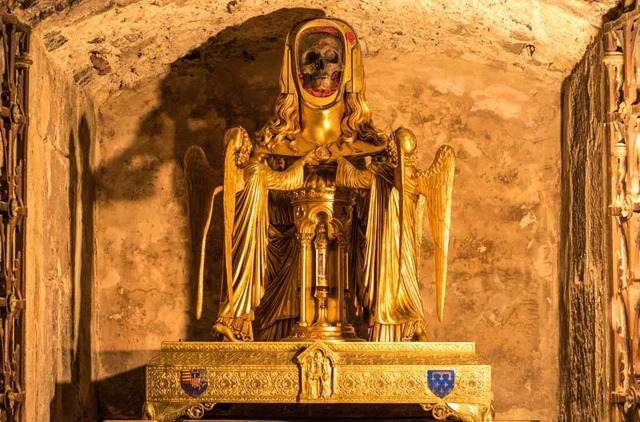
Conclusion
The gold-encased skull in Saint-Maximin-la-Sainte-Baume is more than a relic; it is a symbol of humanity’s enduring quest to connect with the past. Whether or not it belongs to Mary Magdalene, the relic captures the imagination, bridging the worlds of faith, history, and science.
As debates over its authenticity continue, the relic reminds us that some mysteries defy resolution. In the case of Mary Magdalene’s skull, perhaps the journey to uncover the truth is as meaningful as the answers themselves.
